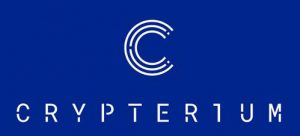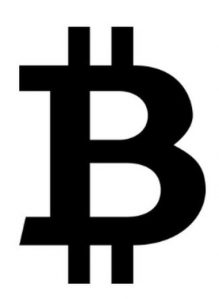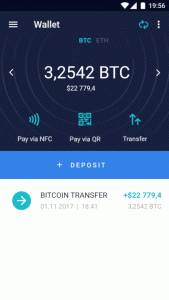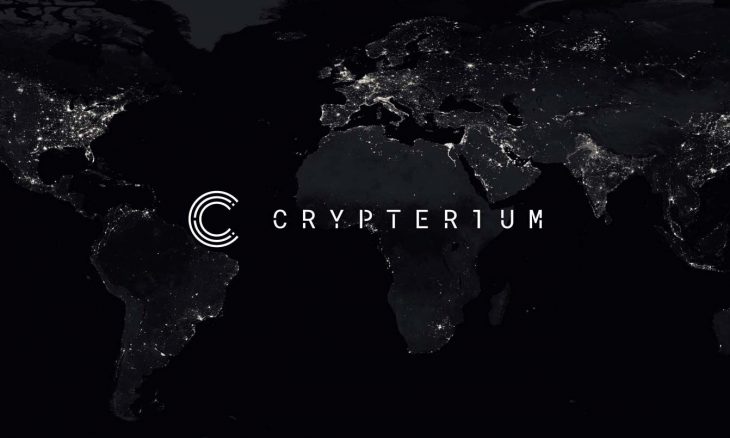Crypterium is a cryptobank with the goal of turning the impenetrable volatile world of cryptocurrency into a contactless payment platform that’s as easy-to-use as the Starbucks App is for buying coffee–providing cryptocurrencies to mainstream everyday users. Once cryptocurrencies are as simple and easy to use every day as dollar bills the benefits of cryptocurrency–lower transaction costs, speed of payment, removal of national boundaries, and so on–become real. Crypterium will free you to easily spend your cryptocurrencies IRL.
with the goal of turning the impenetrable volatile world of cryptocurrency into a contactless payment platform that’s as easy-to-use as the Starbucks App is for buying coffee–providing cryptocurrencies to mainstream everyday users. Once cryptocurrencies are as simple and easy to use every day as dollar bills the benefits of cryptocurrency–lower transaction costs, speed of payment, removal of national boundaries, and so on–become real. Crypterium will free you to easily spend your cryptocurrencies IRL.
Bitcoins have been more stocks and bonds than actual cash

Right now, Bitcoins are almost strictly being used as investment vehicles. They’re stuck like stocks or bonds into just something you track on your phone or look up online. There’s enough of a barrier to entry–tech, cost, and expense–associated with converting government-backed fiat money into cryptocurrency that it’s like owning 400 troy ounce (27 pound!) gold bars like they have in the movies. Sure, you’re rich as hell at $515,778.38-per-London Good Delivery Bar but how’re you going to move that money into a form that you can buy and trade with? It’s both physically heavy and logistically-suspicious.
When it comes to cyrptocurrency, the next step needs to be cryptobanking because even something that’s as simple in Europe with the SWIFT network as sending a bank wire in America is expensive and a pain in the ass, requiring paperwork and signatures and even federal oversight. And that’s just getting Greenbacks into a digital wallet like Coinbase or GDAX. That’s even before buying your very first Litecoin, Namecoin, Dogecoin, PotCoin, Ethereum, and especially, Bitcoin.
I was an early adopter of Bitcoin
 I have been playing around with Bitcoin (Ƀ) since 2009 when I played miner. All this demanded was using my computer’s CPU to mine blockchain blocks using an app in a way that resembles mining diamonds or gold: a new site is easier to mine than an old mine. The more mature the coin (Bitcoin is the oldest) the more brute computing “exertion” is required to make new cryptocurrency available, emulating the rate at which commodities are mined from the ground.
I have been playing around with Bitcoin (Ƀ) since 2009 when I played miner. All this demanded was using my computer’s CPU to mine blockchain blocks using an app in a way that resembles mining diamonds or gold: a new site is easier to mine than an old mine. The more mature the coin (Bitcoin is the oldest) the more brute computing “exertion” is required to make new cryptocurrency available, emulating the rate at which commodities are mined from the ground.
Even today, all cryptocurrency–Litecoin, Namecoin, Dogecoin, PotCoin, Ethereum, and especially Bitcoin–is tough to acquire. Scanned and uploaded Passports and Driver’s License, a $50 international wire from your bank (which could result in your account being closed for money laundering), and then the constant threat of hacking, theft, market collapse, as well as the very real threat of being locked out of your own wallet forever. And then there’s the daily limits on selling. And, of course, when I misplaced what’s called a cryptocurrency paper wallet–the only access anyone on planet earth can ever access your coins–all was naught.
The age of panning for Bitcoins is over
 Now, Bitcoin-mining demands supercomputing powers and more power costs than the coins had been worth. Since I started mining in the early days, even a commercial PC could mine actual Bitcoins. I wonder where I securely hid those first mined coins. After misplacing my private key–I lost my paper wallet! I pray to Saint Anthony every day (Tony, Tony, look around. Something’s lost and must be found!)
Now, Bitcoin-mining demands supercomputing powers and more power costs than the coins had been worth. Since I started mining in the early days, even a commercial PC could mine actual Bitcoins. I wonder where I securely hid those first mined coins. After misplacing my private key–I lost my paper wallet! I pray to Saint Anthony every day (Tony, Tony, look around. Something’s lost and must be found!)
Later, I had a vendor who insisted on being paid with Bitcoin back in 2010-2013. This was the first time I needed to move money from my bank account into my first–and most popular–digital wallet, Coinbase. It was good practice for now but it required me to formally order a wire transfer and then go down to the physical bank myself to fill out forms with a pen on paper and then be told that there was an actual chance that my international wire transfer would be scrutinized under some international money laundering law and that there was a chance that my assets would be seized, my access to the money would be frozen, and my account would be closed. Yikes! It never came to that but it was a pain in my butt (and that vendor is so rich in crypto that he can now buy and sell me like penny candy).
The future of money is cryptobanking
 To get everything moving, Crypterium launched its own ICO (Initial Coin Offering) on Halloween that will remain open until January 12, 2018.
To get everything moving, Crypterium launched its own ICO (Initial Coin Offering) on Halloween that will remain open until January 12, 2018.
Simply put, according to Wikipedia, “an initial coin offering (ICO) is a means of crowdfunding centered around cryptocurrency, which can be a source of capital for startup companies. In an ICO, some quantity of the crowdfunded cryptocurrency is preallocated to investors in the form of “tokens,” in exchange for legal tender or other cryptocurrencies such as Bitcoin or Ethereum. These tokens become functional units of currency if or when the ICO’s funding goal is met and the project launches.”
In the case of Crypterium, they have the CRPT Token. The price of a CRPT Token has been set at 0.0001 Bitcoin in order to make the initial buy in affordable and accessible in these times of $16,037 Bitcoins. Crypterium is accepting payments in Bitcoin, Etherium, and fiat currencies such as US Dollars, Euros, etc.
Sisyphus mines Bitcoin

It’s pretty exciting that the future of banking is a currency without country. That the value of cryptocurrencies are based more on mass hysteria and a quest for value than on the strength and power of a nation’s military. While technically cryptocurrencies can be fiat currencies, Bitcoin, for example, has a limited supply. Bitcoin is the Manhattan and Bay area of Cryptocurrencies.
No matter what, there will never be more than 21 million BTC ever produced.
What’s more, the closer the currency is to 20999999.9769 BTC, the exponentially harder it will be to mine them: the cost of the hardware required to mine the coin and the amount of electricity required to power that level of brutal computing will probably mean only nation states with access to free electricity (The Three Gorges Dam is a hydroelectric gravity dam, after all).
That’s one of the greatest things about meta-coins like the CRPT Tokens: they allow you to straddle the value of a variety of altcoins. You can invest in a variety of cryptocoins and spread your money around and, as Bitcoin becomes too expensive for you or it stagnates (probably won’t, it’ll surely reach $1 million-a-coin at least), you can cross invest and make sure you’re able to work in an environment where your cryptocurrency daily driver won’t be so volatile that the pizza you bought at 11PM for $10 actually cost you $700 because of market volatility. You’d hate that right? Even though that’s a stupid thought game (when I was living in Berlin, a Euro cost $1.30 and a Pound Sterling cost $2, now it’s closer to $1.10 and $1.30), volatility is only good when you’re holding and not when you’re spending.
I look forward to Cryptobanks like Crypterium because I like the idea of being supranational and not relying on US or German banks and banking. I love the idea of having my wealth and value swirling both safely and accessibly somewhere in the cloud. And while cryptocurrencies don’t have to be cloud-based and can be actual real things in the form of a private key in a paper wallet, both accessibility and convenience are important for me. So, until now, I have relied on Coinbase, and in the near future, I shall be relying on cryptobanks like Crypterium.
Actually, Keith Teare, Co-founder of Techcrunch, does a better job than I at explaining Crypterium:
And here’s more info from the horses’ mouths, the Crypterium Team:
Good luck and Happy Boxing Day!
Feel free to own the yacht but hire a crew if you’re not yet seaworthy. If you get my drift and want to adopt the yachting lifestyle yourself but either don’t have the mad sailing skills yourself, don’t yet posses a world-class crew, and don’t know yet where to go, then you should give me a call or reach out me by email — so I can help you pilot your vessel now, in the tranquil blue-green shallows of the Caribbean, as well as in the roughest seas and into — as well as out of — the storm.
If you’d like to chat more, call me at +1 (202) 869-3210 Ext 0001 email me, or feel free to self-schedule a 15-minute call, a 30-minute call, or a 60-minute call with me.




